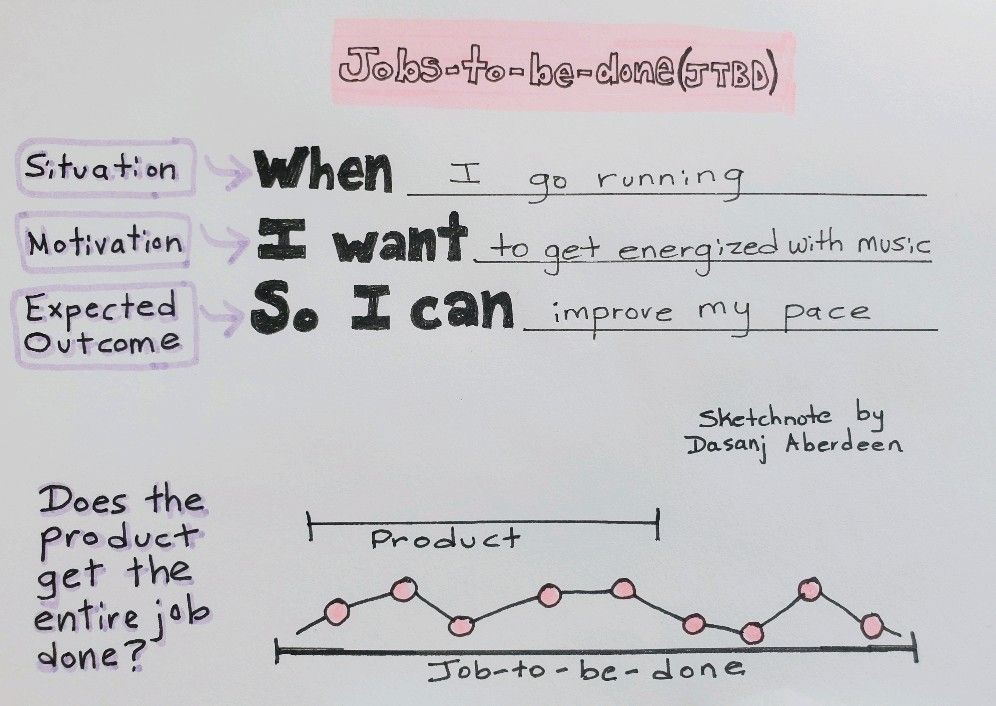Customers “hire” a product to get a job done.
The job may be to accomplish tasks, achieve goals, resolve problems, or improve their lives.
The job is the progress a customer seeks in a particular situation.
Popularized by Clayton Christensen, the jobs-to-be-done (JTBD) framework assumes:
➡️ A job-to-be-done is stable over time
➡️ A job-to-be-done is solution agnostic
➡️ Customers prefer one platform to get the job done
Why is JTBD important?
➡️ Focuses on a customer’s needs based on situations instead of personas
➡️ Focuses on the customer instead of the product to create compelling experiences
Here are some questions product teams should ask:
➡️ Does the product get the entire job done?
➡️ Are parts of the job left undone?
➡️ Are customers using another product to get the rest of the job done?
➡️ How can we address the JTBD on one platform?

Do you use the JTBD framework? How has it helped your process? Let me know below.

Dasanj Aberdeen is an entrepreneurial spirit who embodies the combination of left-brain logic and right-brain creativity. She is a consultant and proponent of multidisciplinary education, approaches and pursuits. She writes about their benefits in modern times and integrating multiple interests into a sustainable and fulfilling lifestyle. She’s a graduate of The Wharton School of the University of Pennsylvania and Temple University with a concentration in Technology & Innovation Management, jointly delivered by the Fox School of Business and College of Engineering.

